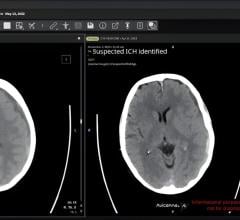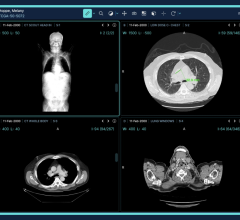
Sometimes people can say the darndest things – even if they’re highly educated, nationally renowned and controversial thought leaders blessed by the likes of Warren Buffett.
Maggie Mahar, author of the book “Money-Driven Medicine,” and “Bull! A History of the Boom, 1982-1999,” (which Buffett apparently recommended in Berkshire Hathaway’s annual report), was scheduled to give a keynote address at the TEPR 2007: Towards the Electronic Patient Record conference in Dallas in late May. The catchy and curious titles of her books allude to her point of view about what’s wrong with healthcare today.
In a press release promoting her keynote, TEPR publishes the following direct and indirect quotes attributed to Mahar. “At this point,” she warns, “there is a real danger that investments in bleeding-edge medical technologies will crowd out investment in healthcare IT. A drive for short-term profits has curtailed investments in HIT which could, in the long run, reduce errors and contain costs.” [Mahar] also points to startling new evidence that suggests that one out of every three of our healthcare dollars is squandered on unnecessary or redundant tests; unproven, sometimes unwanted procedures; and overpriced drugs and devices that, too often, are no better than the less expensive products they have replaced. “To combat waste, healthcare providers need electronic medical records,” says Mahar. “Those records could provide the database that we desperately need to compare the effectiveness of various treatments. It’s too labor-intensive – and too expensive – to try to make those comparisons while working with paper records.”
Much of her point of view in these quotes isn’t earth-shattering rocket science. EHRs have been discussed and dissected for at least the past five years with similar conclusions prevailing. What brings pause is Mahar’s implication that healthcare facilities should shift some of their investment in “bleeding-edge” medical technology to IT for a variety of reasons. Unfortunately, the negativity she applies to medical technology – including drugs – may also be attached to IT.
1. IT is all about short-term profits. Mahar must have mind-blocked the greed-infected dot-com mania between 1998 and 2001 in healthcare. Obviously, none of the companies in the EHR/EMR business today is motivated by profit. Unlike drugs and high-end medical devices and tests, apparently EHR software is priced competitively and reasonably by comparison, particularly if you factor in the overall return-on-investment.
2. Overpriced drugs and medical devices obviously don’t help patients heal faster, thereby reducing long-term healthcare costs all around. Any long-term gains must be overshadowed by short-term profits.
3. Whether products (including procedures and tests) are unnecessary, redundant, unproven, unwanted or even “no better than the less expensive products they have replaced” is highly subjective at best, regardless of the studies that allegedly “prove” it. Enough studies and surveys have been conducted within the last few years that illuminate the fissures between the IT adopters/implementers and the risk-averse procrastinators.
The bottom line for the skeptics is that the EHR movement followed too closely on the heels of the dot-com “revolution,” which arrived on the heels of the “Y2K” fad.
While the efficiency contributions of EHRs are not in doubt, you have to recognize who really benefits from the adoption and implementation. Providers and patients stand to reap considerable rewards. Obviously, the vendors will, too. But EHRs replace mountains of paperwork for the payers. Yet among the din of providers complaining about the total costs of EHR investment and the government granting safe harbors to vendors for “giveaways” and related support, not a peep nor any provision emanates from the payers who stand to gain the most. How transparent.


 December 01, 2025
December 01, 2025 









